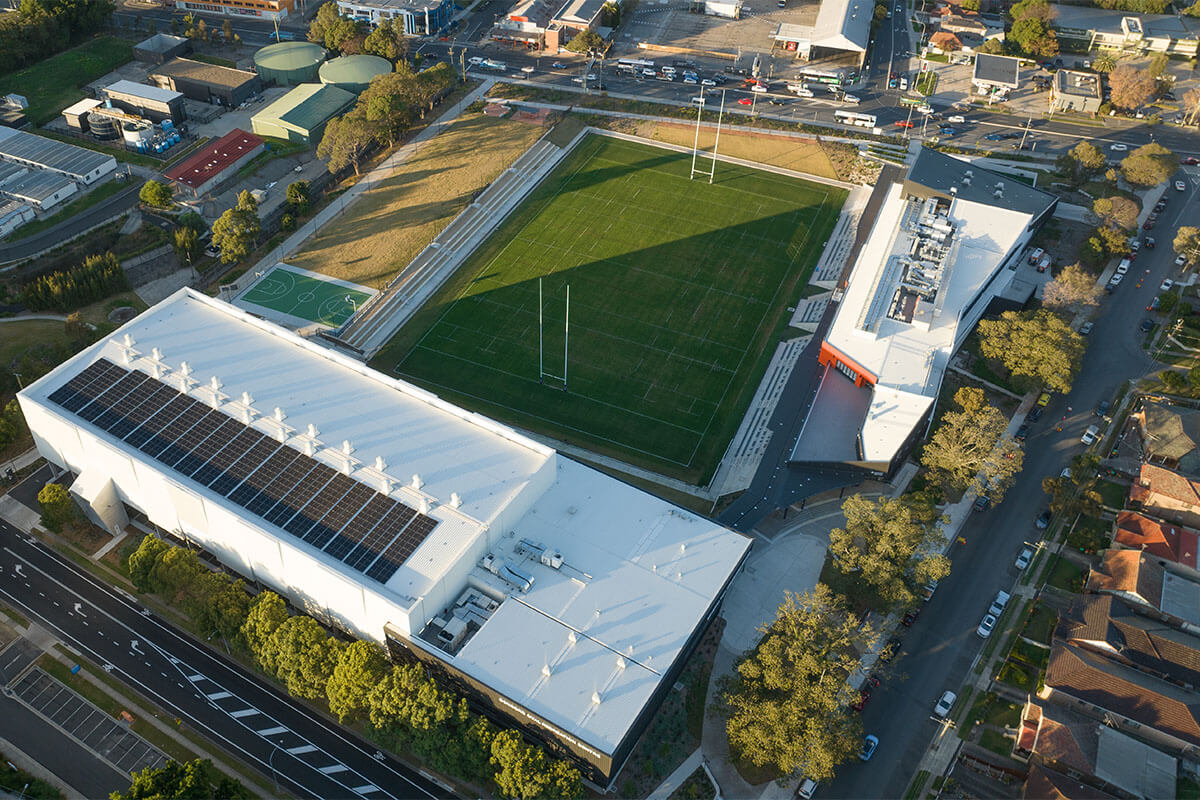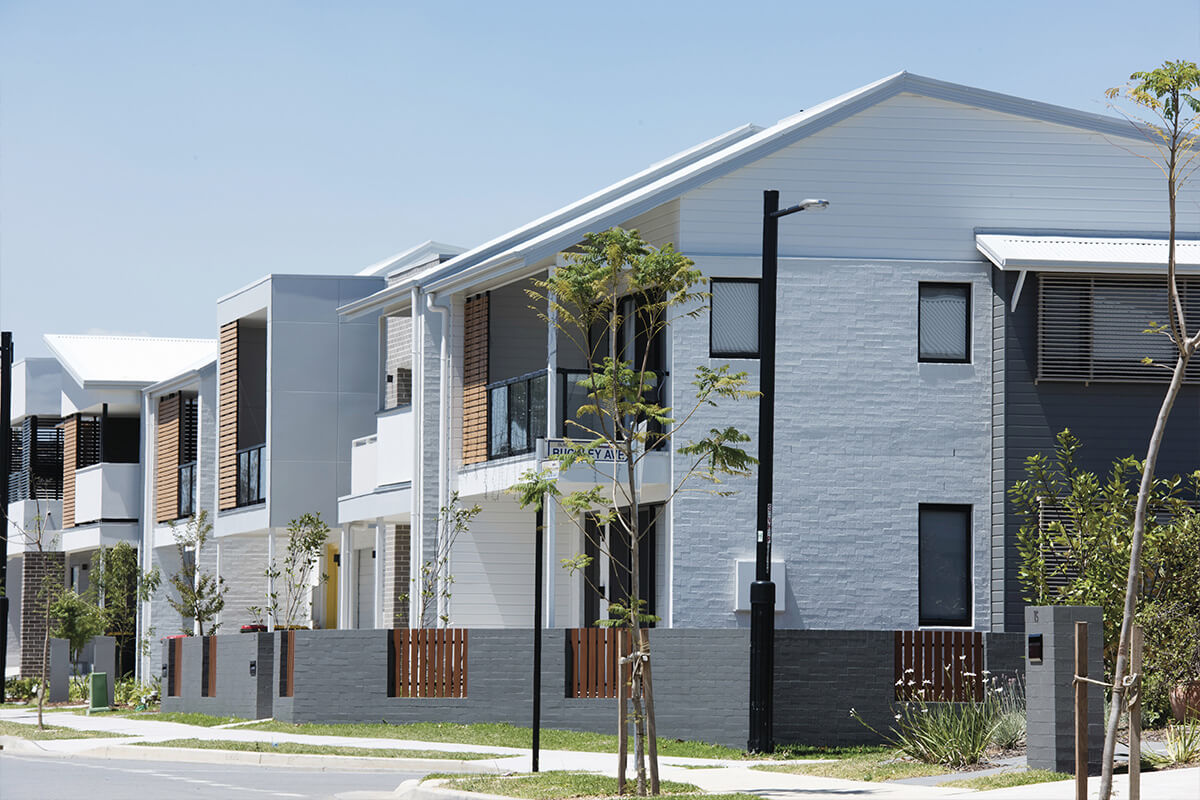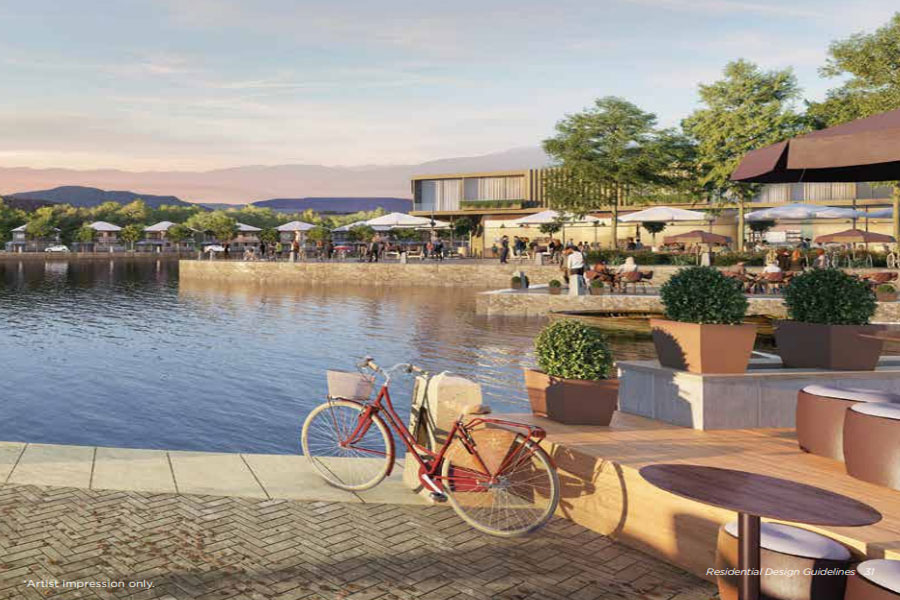Using cool building materials is a cost effective and environmentally friendly technique for beating urban heat.
Cool materials include:
- materials and colours that reflect the sun’s heat or have low solar absorptance
- built surfaces that are shaded by architectural features or green cover
- permeable materials that allow water evaporation.
How materials cool
Read how light, reflective materials can create cooler places.
Roofs have the potential to absorb and retain a large amount of solar radiation, heating up the roof surface and the underlying building structure and reradiating heat to the surrounding area.
According to UNSW’s Cool Roofs Cost Benefit Analysis, using appropriate roofing materials can reduce summer peak ambient temperature in Sydney by up to 1.6°C and the average surface temperature by around 4 to 8°C.
Like roofs, walls absorb and retain heat from the sun and contribute to increased temperatures in built up areas. Opting for cool wall materials that minimise heat absorption can mitigate heat and create more comfortable surroundings.
Cool wall materials reduce heat absorption and heat release into the surrounding environment.
Paving materials are usually hard, thick and heavy. They repel water and are generally hotter than unpaved surfaces. Reducing hard paving in lower-traffic outdoor areas and using cool paving materials for roads, carparks, footpaths and sports courts helps mitigate the urban heat island effect.
Cool pavement materials include permeable paving and paving with lighter coloured pigments, which store less heat compared with conventional products.
Windows are major contributors to heat loss in winter and heat gain in summer. Up to 40% of heating energy can be lost through windows and 87% of unwanted summer heat can enter through them.
Place windows so that they aren’t exposed to the western sun. Shade windows and use high-performance glass. All these strategies reduce heat and make your home or business more comfortable and efficient.
Choose cool materials to reduce urban heat build-up
Case studies
Read the case studies to understand how the use of cool materials can create cooler places.
Panorama at North Wilton
Reducing urban heat and building resilience through cool materials is a key focus of the design at Panorama. Panorama will be characterised by low- to medium-density development designed to harness the cooling potential of its landscape.
Panorama’s town centre features a lake surrounded by green open space, which acts as a natural cooling system to mitigate the effects of heat for the community.
Cool Materials for Homes
Landcom has set requirements for the use of cool materials in Design Guidelines for Panorama to ensure homes provide thermal comfort and reduce energy costs for households:
- There is a strong emphasis on using light-coloured finishes and materials to reflect sunlight and reduce heat absorption.
- Artificial turf is not allowed on any property since it absorbs sunlight and creates very high surface temperatures as well as leading to poor outcomes for stormwater management and releasing microplastics into the local environment. Instead, green cover is prioritised through the landscaping requirements and hard, paved surfaces are kept to a minimum.
- Shading is critical for cooling especially for north-and-west-facing windows and sliding doors. Where overhead shading is impractical, Landcom has identified solutions such as planting trees, and installing pergolas, vertical angled screens or high-performance glass.
Adopting these requirements to create cooler homes is supported by rebates offered for sustainability measures and landscaping.
Benefits
In setting these requirements, Landcom considered evidence for the costs and benefits of cool materials. The UNSW Cool Roofs Cost Benefit Analysis shows that the temperature reductions achieved by cool roof materials deliver a variety of benefits. For example, the study found that the cost of cool roofs is comparable to conventional roofs, however, homes with cool roofs can benefit from having 100 fewer hours each summer where indoor temperatures exceed 26°C. At larger scales, cool roofs can reduce peak electricity demand by 10%-50%, helping to reduce energy costs and prevent power outages.
Solar panels and energy-efficient appliances are standard features in Panorama homes. All homes are required to exceed the minimum BASIX requirements for energy and water. These features help to significantly reduce energy consumption and costs for households.
Landcom projects applying these strategies will reduce carbon emissions by up to 6 tonnes each year compared to an average home. This will reduce Panorama’s carbon footprint and contribute to a cooler environment for everyone.
To read more about Landcom's Sustainable Places Strategy case study, visit Using planning strategies and controls for cooling.


